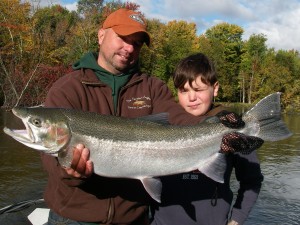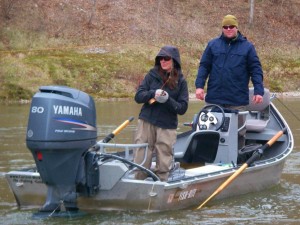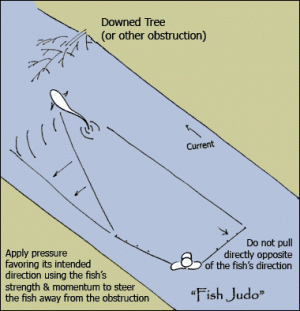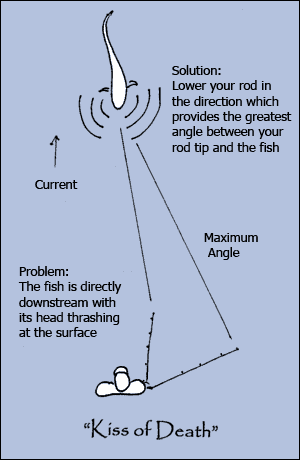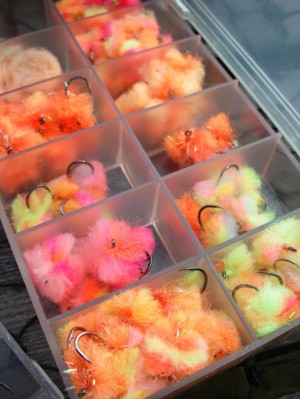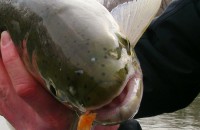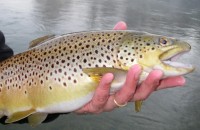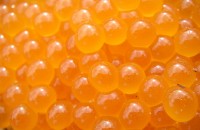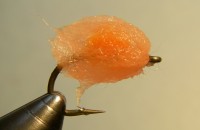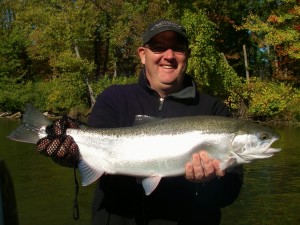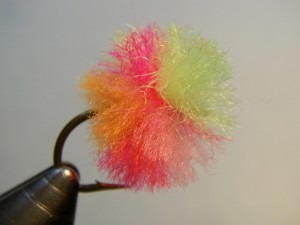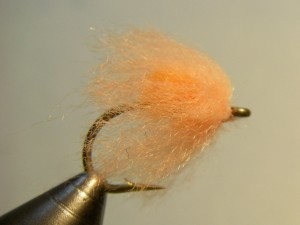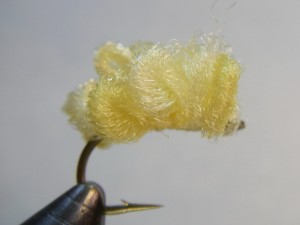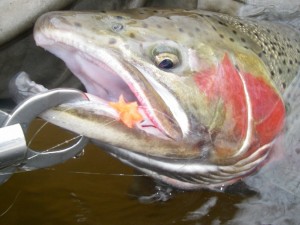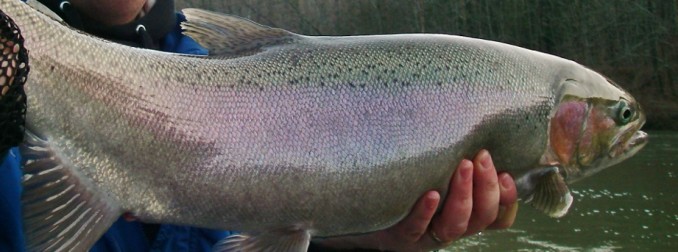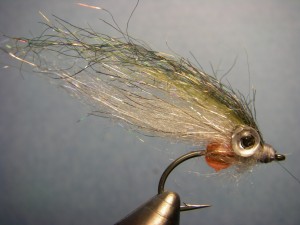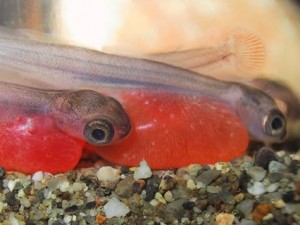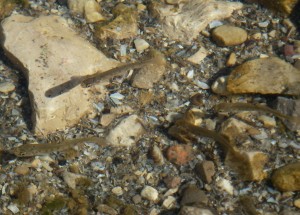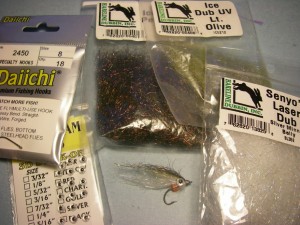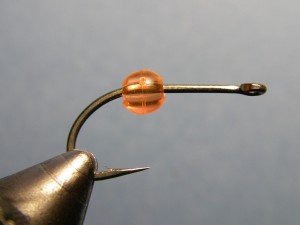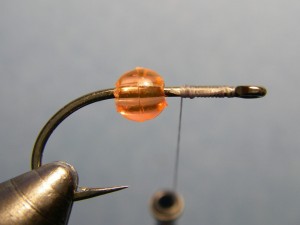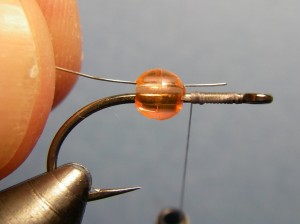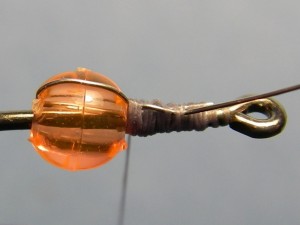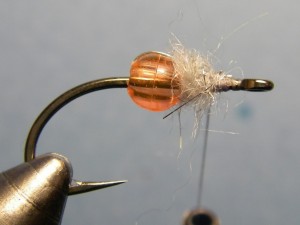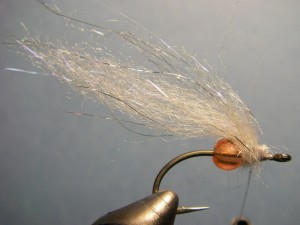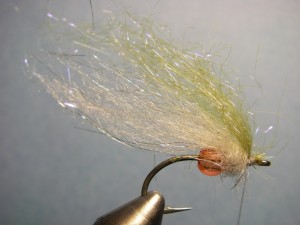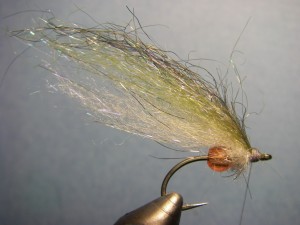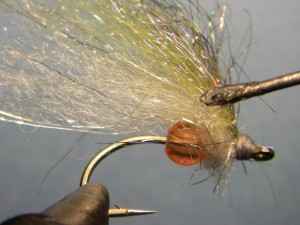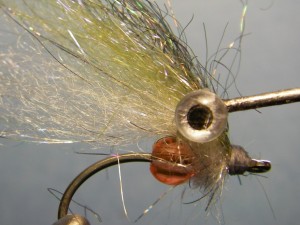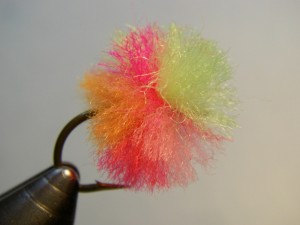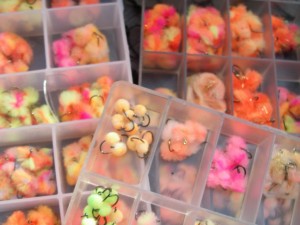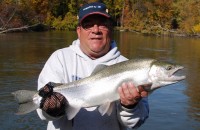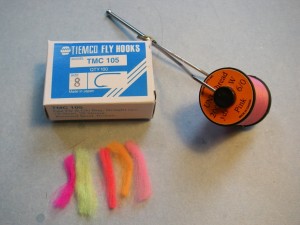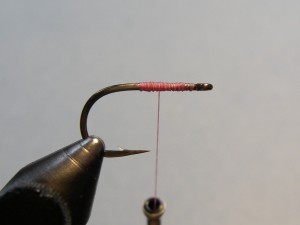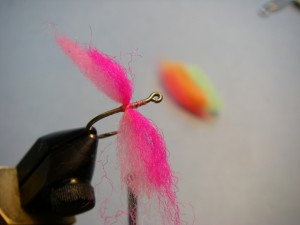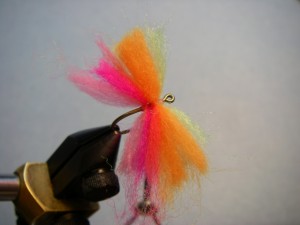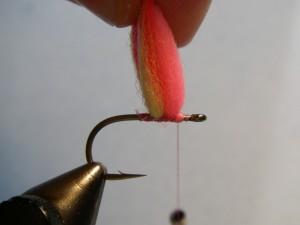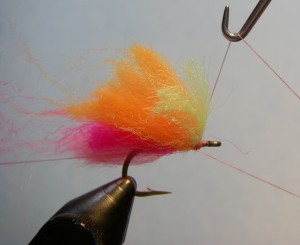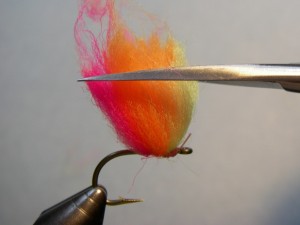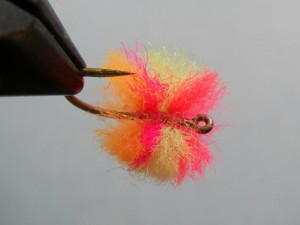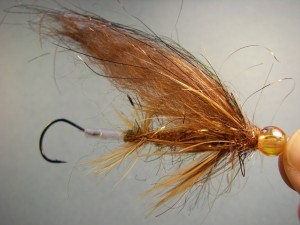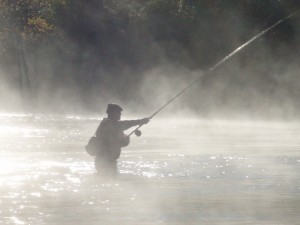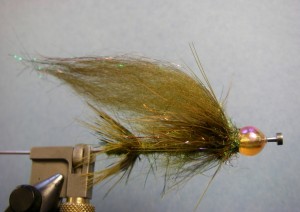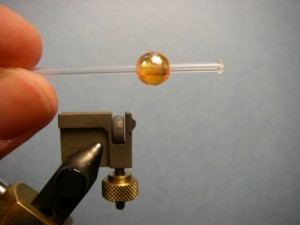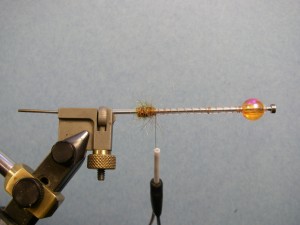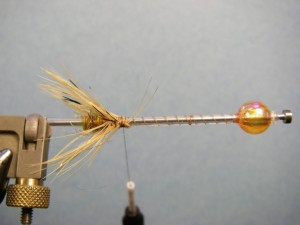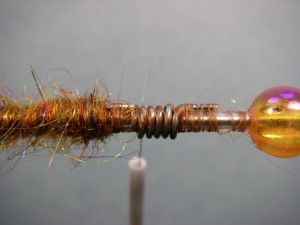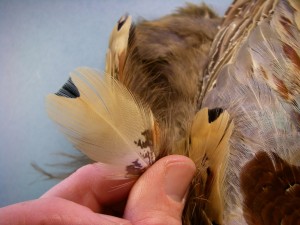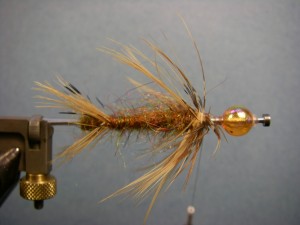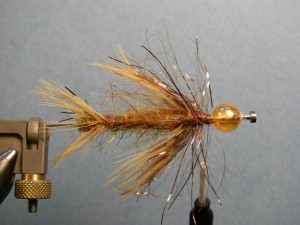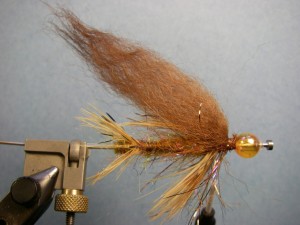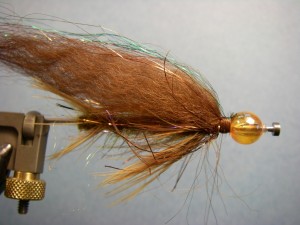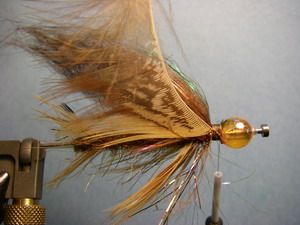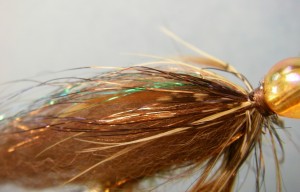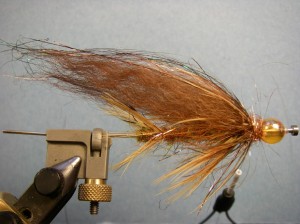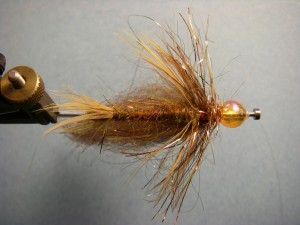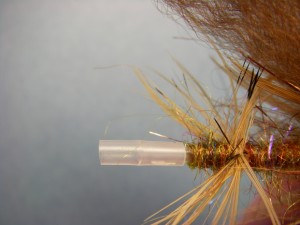We all fish for different reasons, but one thing remains certain for all of us – when we hook a fish, we want to land it. Whether it’s a trophy steelhead you’ve been determined to catch for years or an 8-inch brook trout, there are certain principles to understand and fundamental skills to use when on the river. Here are some pointers I have picked up through the years by doing, observing and teaching which will increase your chances of telling a fish story that doesn’t start with, “You should have seen the one that got away.”
Under Pressure
We have all heard it – keep a tight line on the fish. This holds true for almost every conceivable fishing situation – maintain tension and keep the slack out. Not doing so increases two potential pitfalls: 1. Pressure on the hook keeps it in the fish – hopefully buried into the bend of the hook. With slack in the line, the hook can literally fall out of the entry point leaving you with slack line and disgusted look on your face. 2. The longer the fish, the more distance they can move their head. This back-and-forth action coupled with lighter line is similar to how you break thread or a line in your hand – you start with slack and then forcefully jerk it. Think about it – do you pull evenly and smoothly to intentionally break a line? Maintain tension to help prevent the line from snapping.
Being Smooth
Maintain a tight line by reeling and pulling with the rod, but do it smoothly. Have you ever seen a large bull cow with a ring in its nose? Its purpose is to allow the handler to lead the bull around: smoothly draw it in a direction and it will follow, but if yanked or pulled hard it often violently moves in the opposite direction. The same is true with fish. In fact, you can almost make a case for Newton’s Third Law of Physics: for every action there is an equal but opposite reaction – the harder you pull on a fish in one direction, it often wants to go in the other direction that much more. Reel smoothly and bring the fish to you or to a place downstream where you intend to land it.
Fish Judo
Hooked fish are often easy to steer and control because you have them hooked in the leading part of its anatomy – the mouth. As long as you keep that head moving in the right direction, you have a better chance of dictating and controlling the fight and keeping emotions under control. But, not always. Often the fish tumbles, jumps or quickly changes directions and gets his head going in the opposite direction you want. When this happens the fish is in control and often heads for cover/structure, which more often than not here in Michigan means logs.
Rather than pulling straight back with rod in the opposite direction the fish is headed (which, with larger species only infuriates them more – remember Newton’s Third Law?) – use “Fish Judo” which, in essence, is using their energy to your advantage. With a low rod, lead them away from the ominous structure by pulling the fish to the side, favoring its intended direction and steer it away.
How Much Is Enough?
There can be a fine line between too much pressure and not enough. Often, it isn’t enough. Truly. When anglers hold the rod tip straight up while fighting the fish, they often do so to keep the slack out, but are putting very little pressure on the fish. Does it seem like you’re applying serious pressure or that the rod is maxed out? You might be surprised as I was when my eyes were opened during a tarpon fishing trip.
Try this experiment/exercise: Get a friend (better if it’s a fellow angler) and pull 25 feet of line and leader through the rod. Have your friend pull back on the rod with the tip up and maintain pressure while you hold the end of the leader. How much pressure do you feel? If this isn’t scientific enough for you then get some type of weight scale like a boga grip and tie the line to it. Repeat the experiment and read the scale and read the results. Change places with your friend and repeat — the scale readings will give you a better idea of how much pressure you are applying. Further, move the rod tip down closer to horizontal and see how that affects the amount of pressure on the scale. Remember – it’s the snap or jerk of the line that is more accountable for breaking rather than smooth pressure which is why equipment too, plays a role in protecting lines when applying pressure, i.e., a smooth drag and a rod tip that flexes and acts as a shock absorber.
The Kiss of Death
The time, in my opinion, when a fish is most likely to “spit the hook” and send the hook back to you is when it’s down stream, facing you, and shaking its head violently. I hate it. And it happens often. When this occurs, we as anglers often have the rod tip pointed up and the force of the water brings the fish to the surface, thrashing. As soon as you see this happen – or better yet – starting to happen, move your rod down to a horizontal position and to the side furthest away from the fish, creating the maximum angle between your rod tip and the fish. By doing so you gain additional continual pressure on the hook through the headshaking as the current assists by putting a downstream bend in the line. Also, this lowered, sideways pressure encourages the fish to get its head down in the water column where you can tire the fish out instead of holding on and hoping.
“Let him go, let him go!”
Some days when guiding I seem to say this more than others. When a fish is making a run and is in charge, let him go. By holding your reel handle or grabbing the line, only bad things happen — and it’s usually a fish lost because of line breaking or flies pulling out. When a fish runs, trust your drag setting (you did adjust it at the start of the day didn’t you?) and let him go while incorporating some of the pointers mentioned above.
Reel Fast
If you don’t get the opportunity to fish much and are a little slow at reeling in – practice at home. Put your reel on the bottom section of your rod and just practice “air-reeling.” Make your reeling faster and smother by keeping your elbow and forearm at a 90-degree angle to the face of the reel and using a circular wrist motion to wind – if not, your reeling will be jerky and definitely not as fast.
Water Survey
This often happens sub-consciously, but not always. While fishing, you are reading water to make the best presentation of your ability to the water most likely to be holding fish. Through this process take stock of structure, depth, overhanging trees and water depth. By doing so, when you hook a fish in that particular location, you know where you need to keep that fish from going and where a good location is to land a fish, while remaining safe (and dry).
Giving Them the Wood
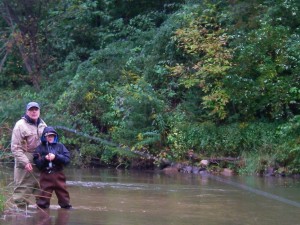 Sometimes a fish gets the upper hand on you – that is they are going to break you off on some type of structure or go around the river bend, etc. , and there simply isn’t much you can do – except, “Give ‘em the wood.” This last-ditch effort to get the fish to hand is done by applying the maximum power of the rod through the butt section and trying to slow down, turn, or stop the fish – something to disrupt the pending course of events and keep the fish on the line. By doing this you are taking your equipment to the maximum – testing the strength of rods, tippets and knots – but if you don’t you will lose the fish. Think of this as an all or nothing move – meaning, the fish is going to win/get away unless you stop them so, give ‘em the wood.
Sometimes a fish gets the upper hand on you – that is they are going to break you off on some type of structure or go around the river bend, etc. , and there simply isn’t much you can do – except, “Give ‘em the wood.” This last-ditch effort to get the fish to hand is done by applying the maximum power of the rod through the butt section and trying to slow down, turn, or stop the fish – something to disrupt the pending course of events and keep the fish on the line. By doing this you are taking your equipment to the maximum – testing the strength of rods, tippets and knots – but if you don’t you will lose the fish. Think of this as an all or nothing move – meaning, the fish is going to win/get away unless you stop them so, give ‘em the wood.
The Capture
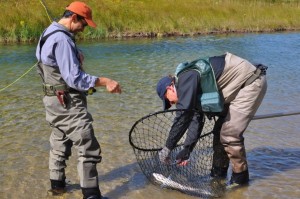
Some like to use nets, others like to grab fish with their hand or landing glove. Regardless, you need to get the fish close to you first and second, the grab or sweep of the net needs to be done swiftly and at the right time. When the fish is close, have your rod down low and lift its head up smoothly – but stay committed with lifting until the fish is in the net. If fishing with a friend or guide, this is the time they sweep the net under the fish – head first, with confidence, not hesitation. If using a landing hand on larger species like steelhead or salmon, execute a “Heron Grab” which is done by plunging your hand downward onto the fish’s wrist (the skinny part of the tail) and hold on firmly. Be sure to communicate during the process or the communication after the failed attempt will be colorful and often will test any friendship. If you are by fishing by yourself, get the fish close and have your rod on the opposite side of where you intend to land it. If fishing for smaller fish like a trout, gently grab the fish around its middle or slide the net under it. Never bring a fish up onto the shore or muddy bank as sand, silt and other debris will get into their gill plates, often killing the fish within a few days.
Keep in mind we are out fishing for fun, whereas the fish – once hooked – are fighting for survival. Even though you might follow all of these suggestions and tips as well as some of your own, sometimes it isn’t enough and the fish wins. Rather than be pissed-off – tip your hat in appreciation of that fish and get ready for the next chance at landing what could be even bigger and better; use the tips for fighting and landing fish above to help make that happen.

